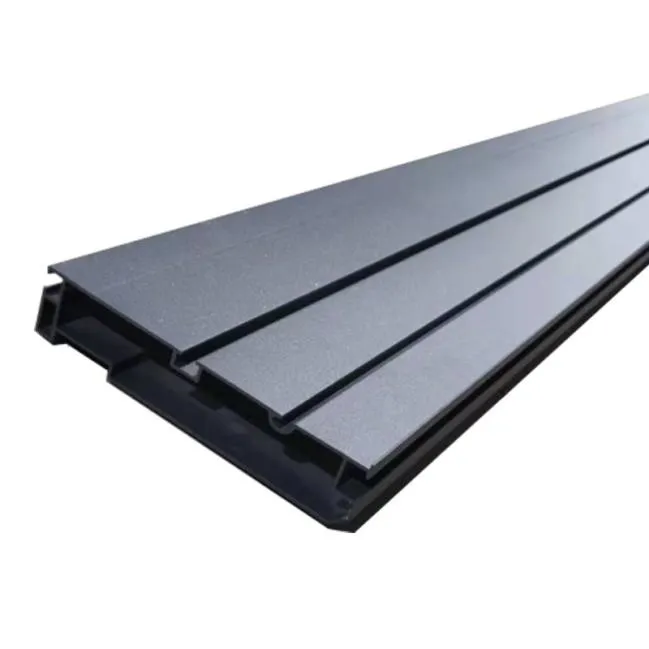Aluminum Profiles for Architectural Applications: Versatility and Elegance
2024-11-23
Aluminum profiles have become a cornerstone in modern architecture due to their versatility, durability, and aesthetic appeal. From sleek building facades to intricate interior designs, these profiles are used extensively in both structural and decorative applications. Their lightweight yet robust nature makes them ideal for architects and designers looking for innovative solutions. Here’s an in-depth look at aluminum profiles for architectural applications, their benefits, and how they are shaping contemporary design.
What Are Aluminum Profiles?
Aluminum profiles are extruded components made from aluminum alloys, which are processed to achieve specific shapes and functionalities. These profiles come in various cross-sectional designs and are widely used in architectural projects due to their adaptability.
Common types of aluminum profiles include:
- T-shaped
- U-shaped
- Hollow sections
- Flat bars
- Customized shapes tailored for specific architectural needs.

Applications of Aluminum Profiles in Architecture
1. Building Facades
- Aluminum profiles are integral in creating curtain walls and cladding systems.
- They offer weather resistance, thermal insulation, and a sleek modern appearance.
2. Windows and Doors
- Aluminum profiles provide a strong framework for windows and doors, allowing for larger glass panes while maintaining structural integrity.
- They offer excellent energy efficiency with thermal break technology.
3. Roofing and Skylights
- Used in frameworks for skylights and translucent roofing systems, aluminum profiles ensure lightweight yet sturdy support.
4. Interior Design
- Aluminum profiles are used for partition walls, ceilings, and decorative elements, adding a modern touch to interiors.
- They can be anodized or powder-coated to match design themes.
5. Railings and Balconies
- Durable and corrosion-resistant, aluminum profiles are ideal for railings and balcony structures, combining safety with aesthetics.
6. Green Building Components
- Aluminum profiles are used in solar panel mounts and energy-efficient window systems, supporting sustainable construction practices.
Advantages of Using Aluminum Profiles
1. Lightweight and Strong
- Aluminum is significantly lighter than other metals like steel, making it easier to handle during construction.
- Despite its lightness, it has excellent strength-to-weight ratios, ensuring stability and durability.
2. Corrosion Resistance
- Natural oxide layers protect aluminum from rust and corrosion, making it ideal for outdoor applications.
3. Design Flexibility
- Extrusion allows for complex and customized shapes, enabling architects to bring intricate designs to life.
4. Sustainability
- Aluminum is 100% recyclable, making it an eco-friendly choice for green building projects.
5. Aesthetic Appeal
- Available in various finishes like anodizing, powder coating, and painting, aluminum profiles can match any architectural style.
6. Cost-Effective
- Low maintenance requirements and longevity make aluminum profiles a cost-efficient option in the long run.
Trends in Aluminum Profiles for Architecture
- Energy Efficiency: Profiles with thermal break technology are gaining popularity, helping to reduce energy consumption in buildings.
- Minimalist Designs: Slim and sleek profiles align with contemporary architectural trends focused on simplicity and functionality.
- Smart Integration: Aluminum profiles are being used to incorporate smart technologies, such as integrated lighting or automated window systems.
- Custom Finishes: Enhanced coating technologies allow for more diverse finishes, including wood-like textures and vibrant colors.
Choosing the Right Aluminum Profiles
When selecting aluminum profiles for architectural applications, consider the following:
- Structural Requirements: Ensure the profile can handle the load and stress of the intended application.
- Thermal Performance: For windows and facades, opt for profiles with thermal breaks to improve energy efficiency.
- Aesthetic Preferences: Choose the right finish and design to complement the building’s style.
- Environmental Conditions: Consider profiles with added coatings or treatments for projects in harsh climates.
Conclusion
Aluminum profiles have revolutionized architectural design, offering unmatched versatility and performance. Their use in facades, windows, doors, and interiors reflects their importance in creating sustainable, modern, and aesthetically pleasing structures. As technology advances, aluminum profiles will continue to evolve, enabling architects to push the boundaries of design and functionality in the built environment.

